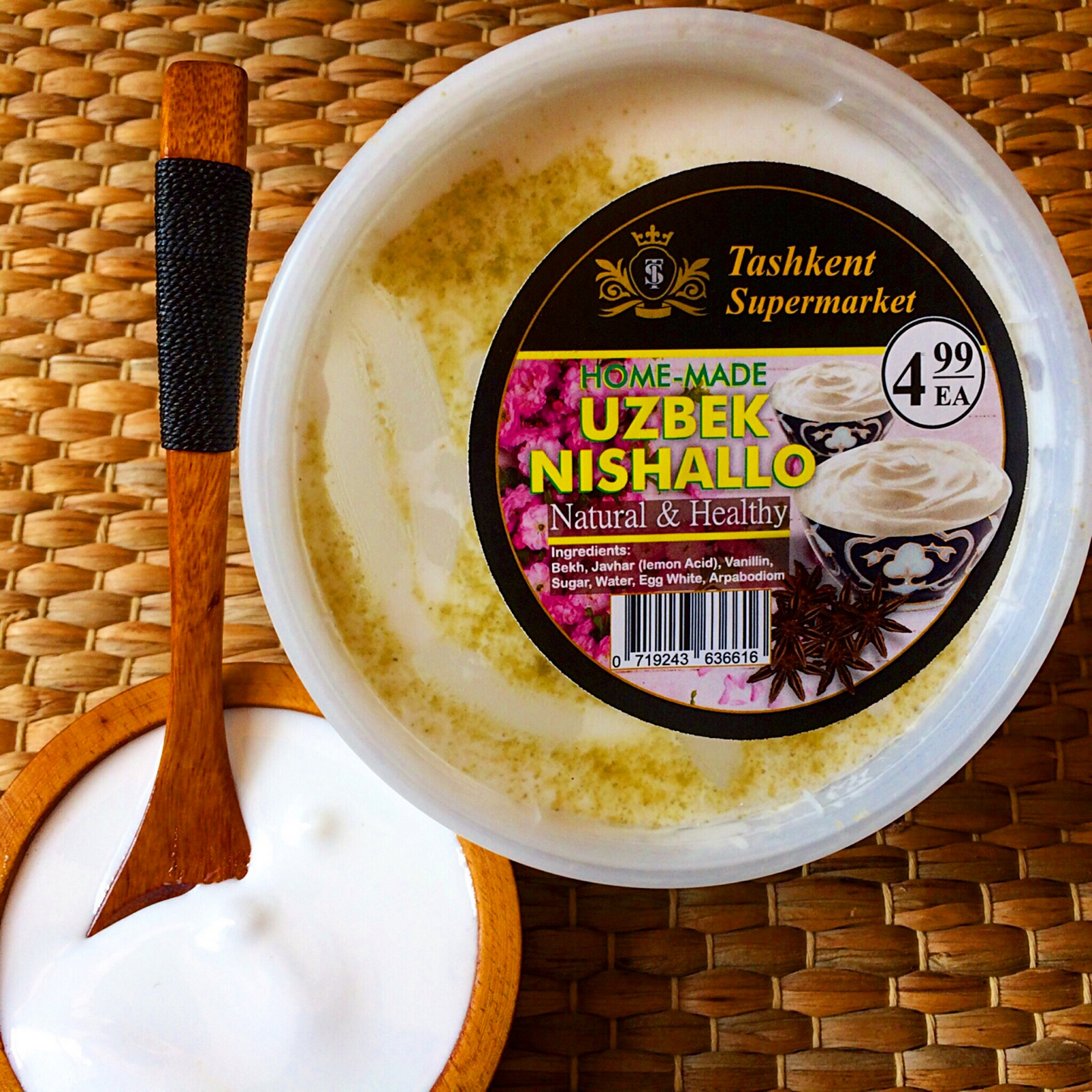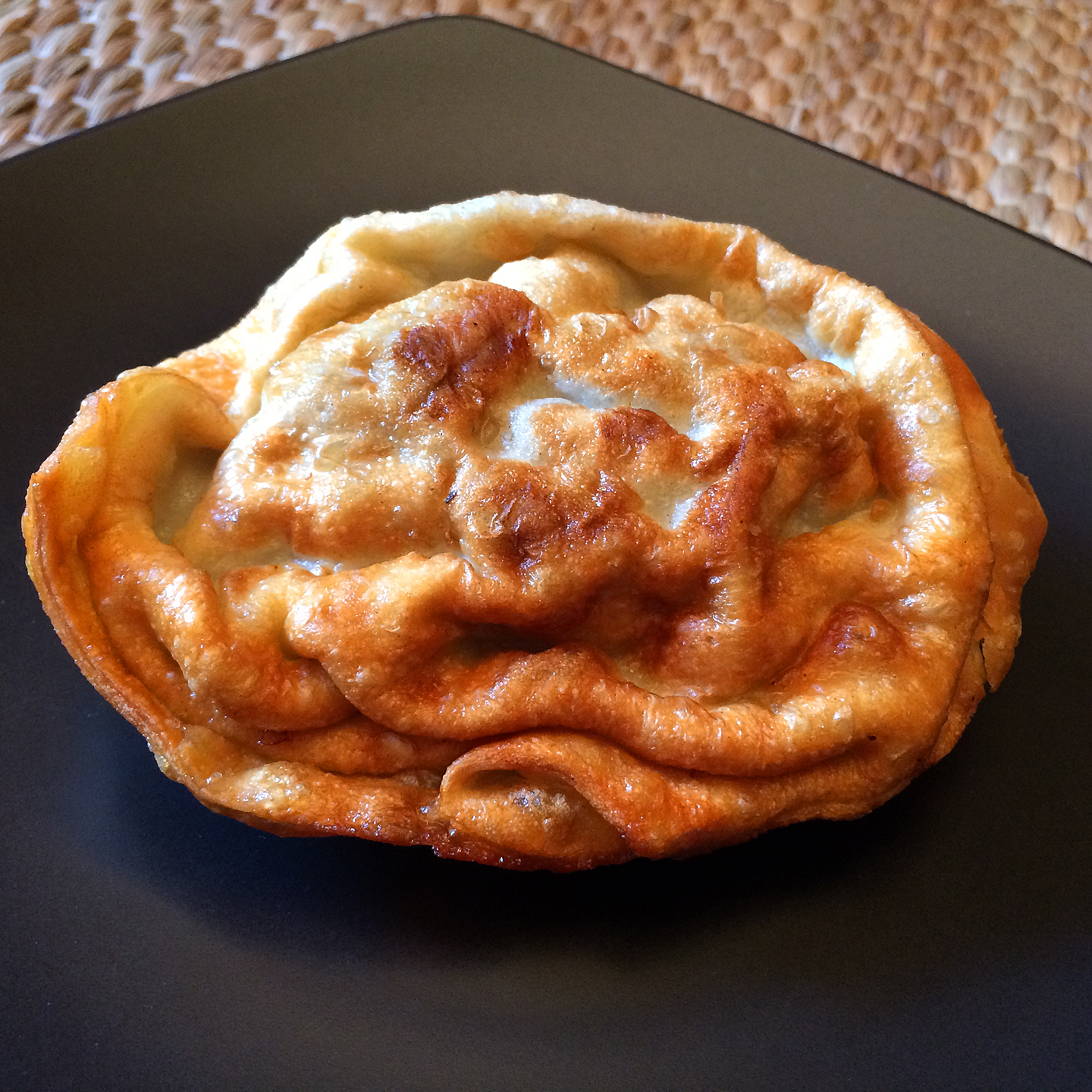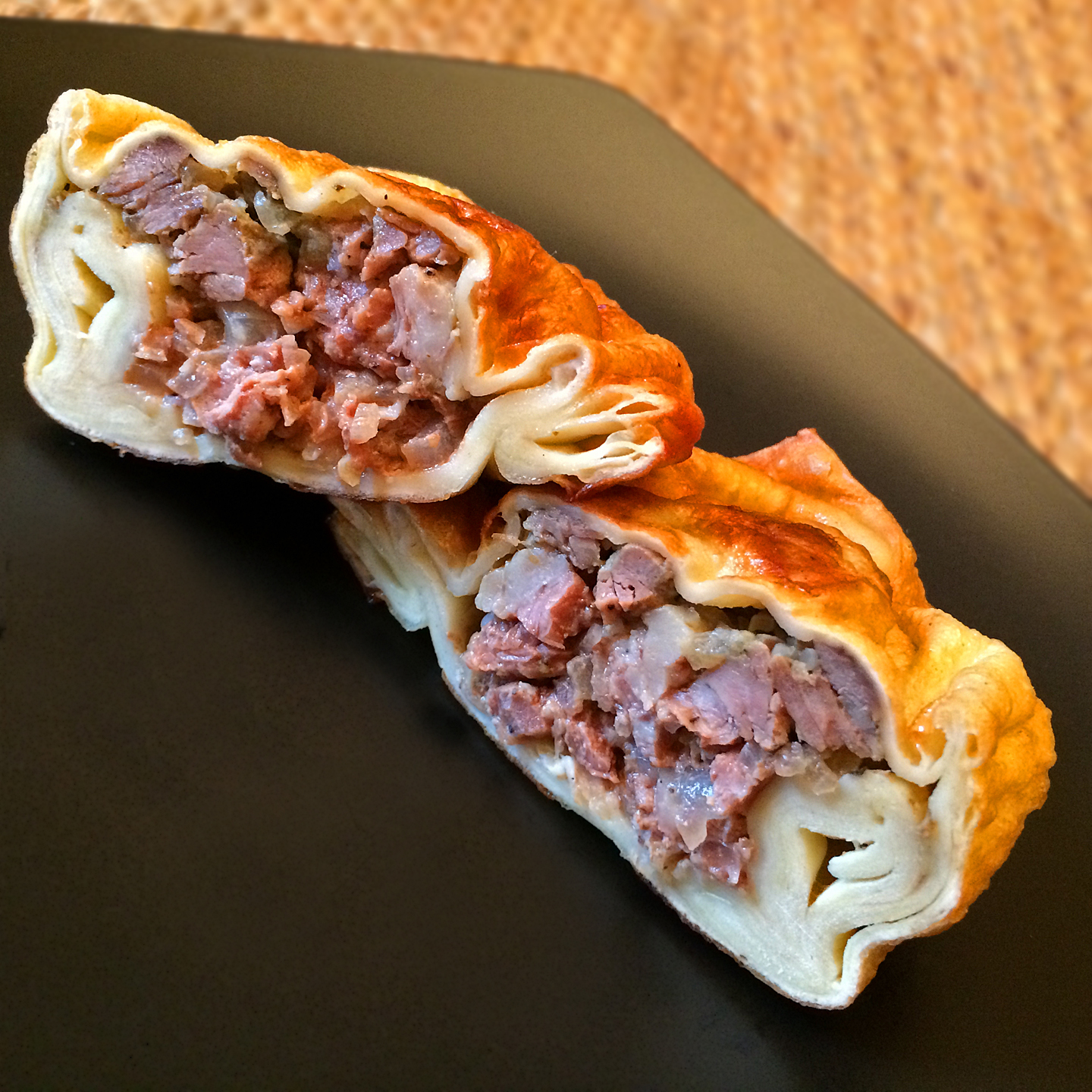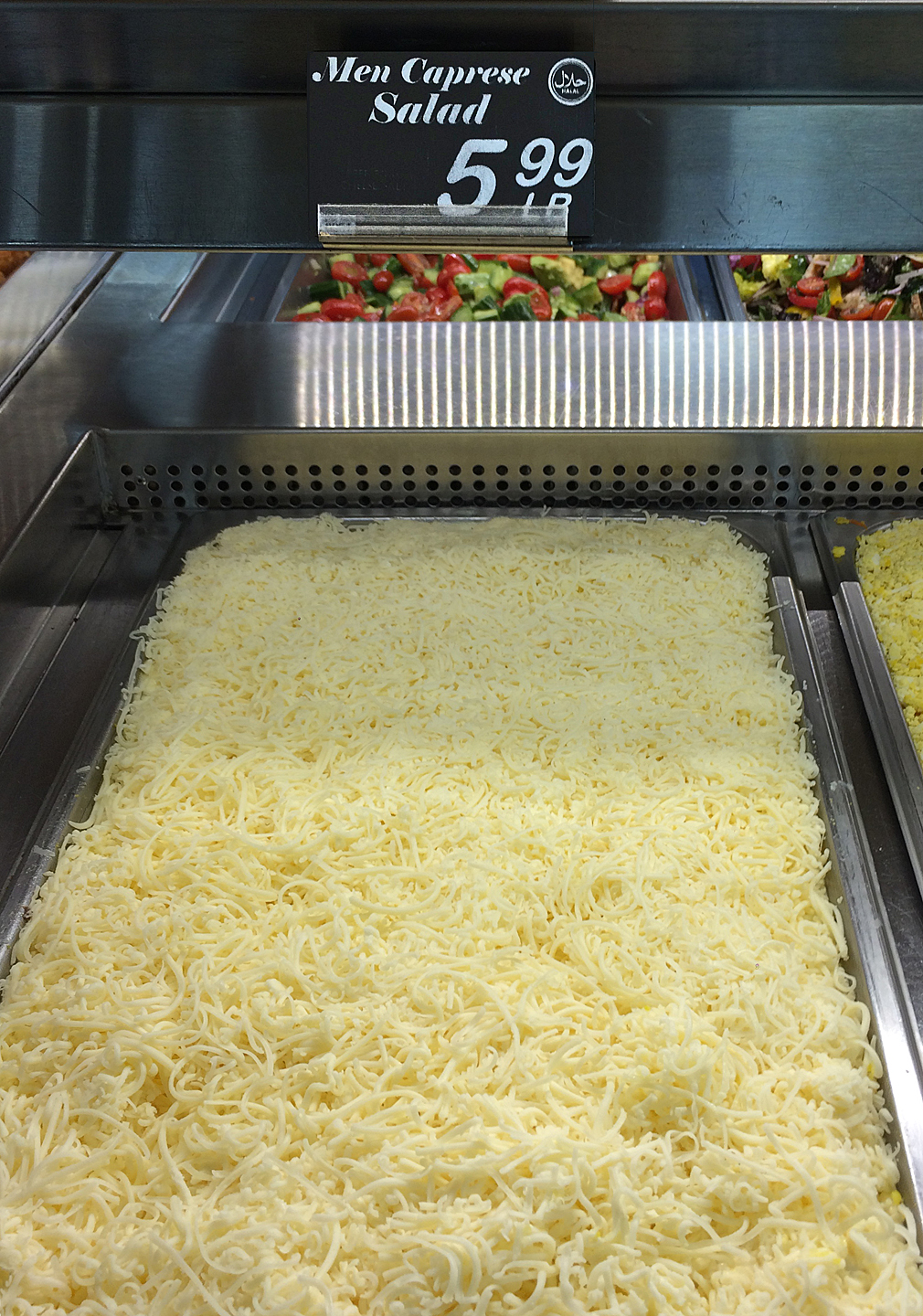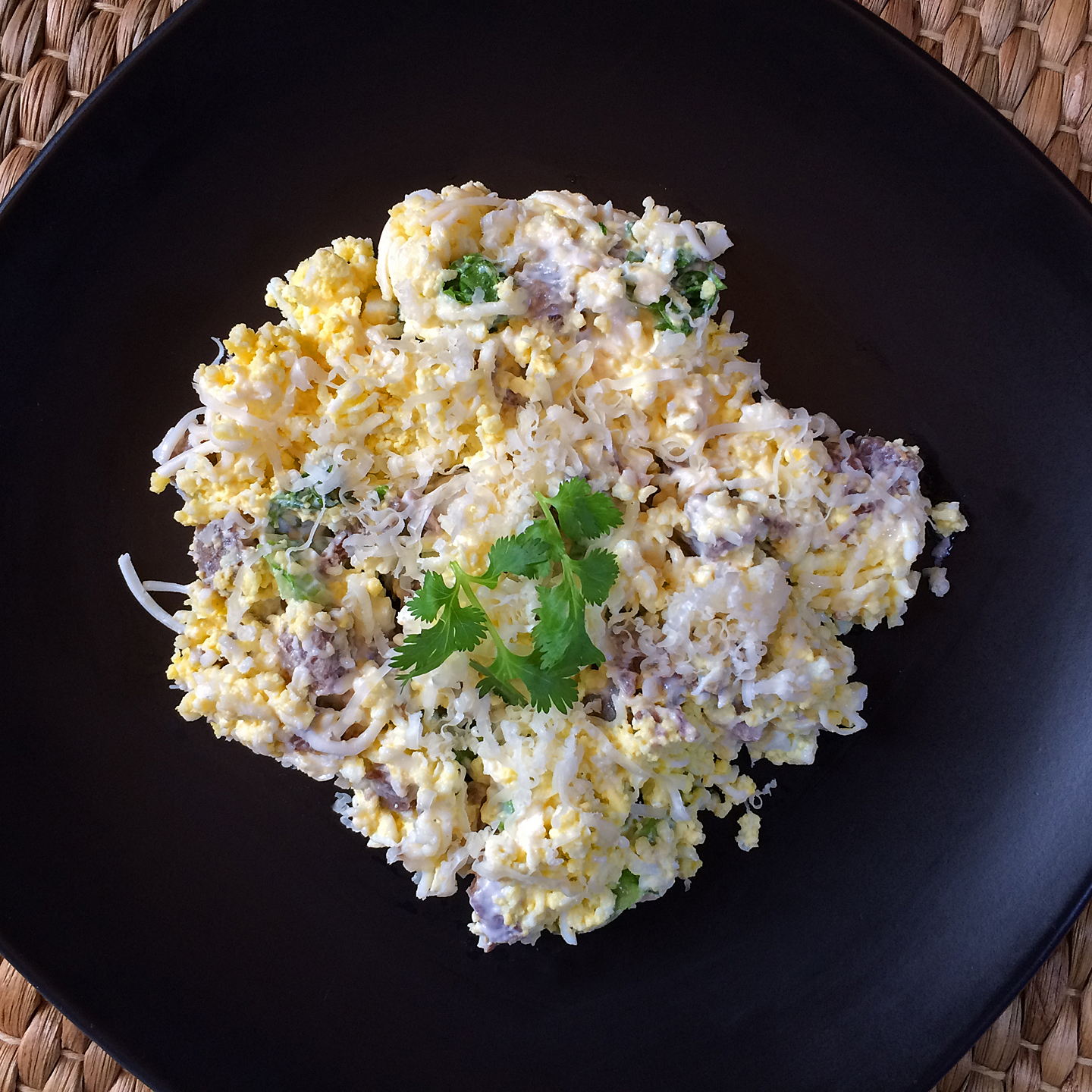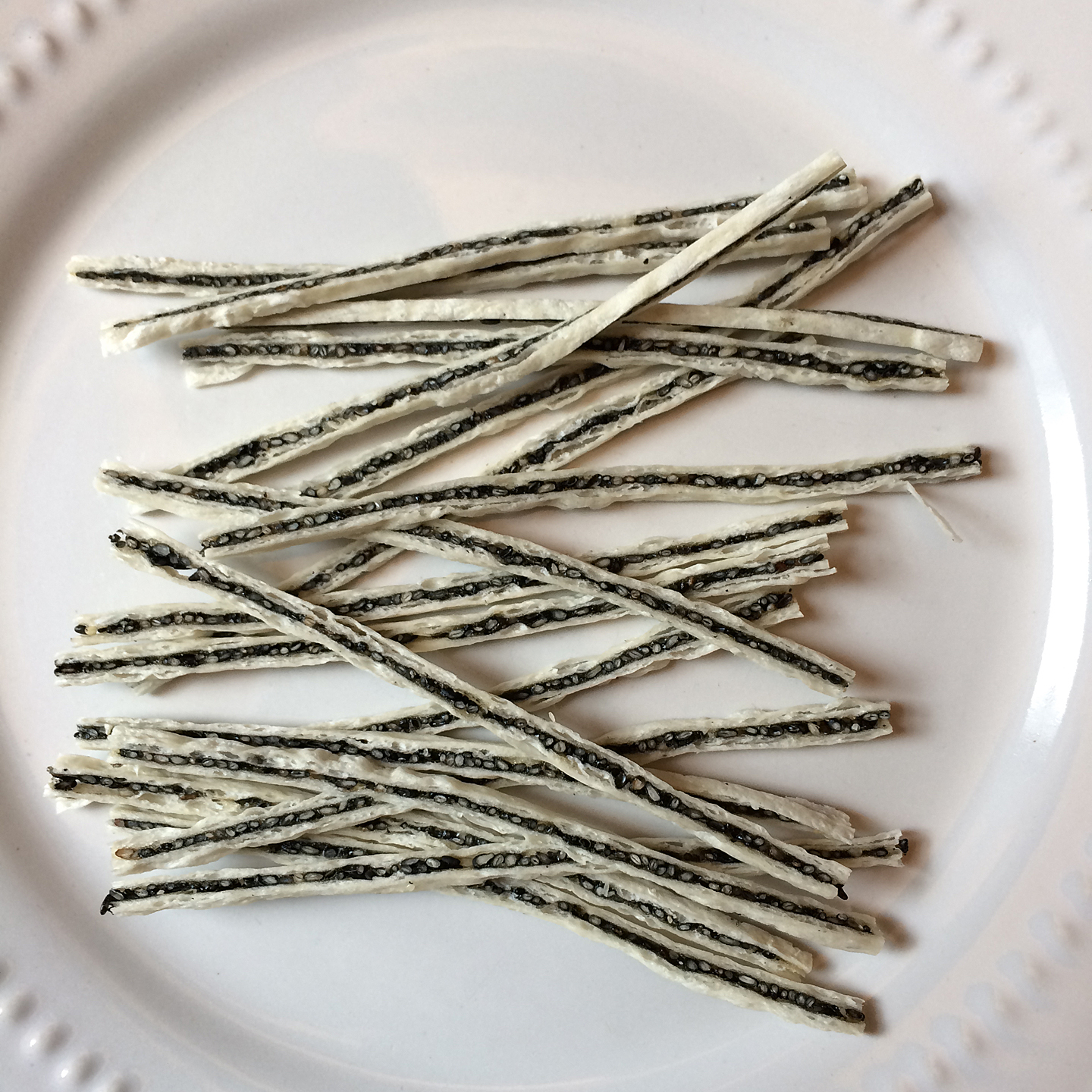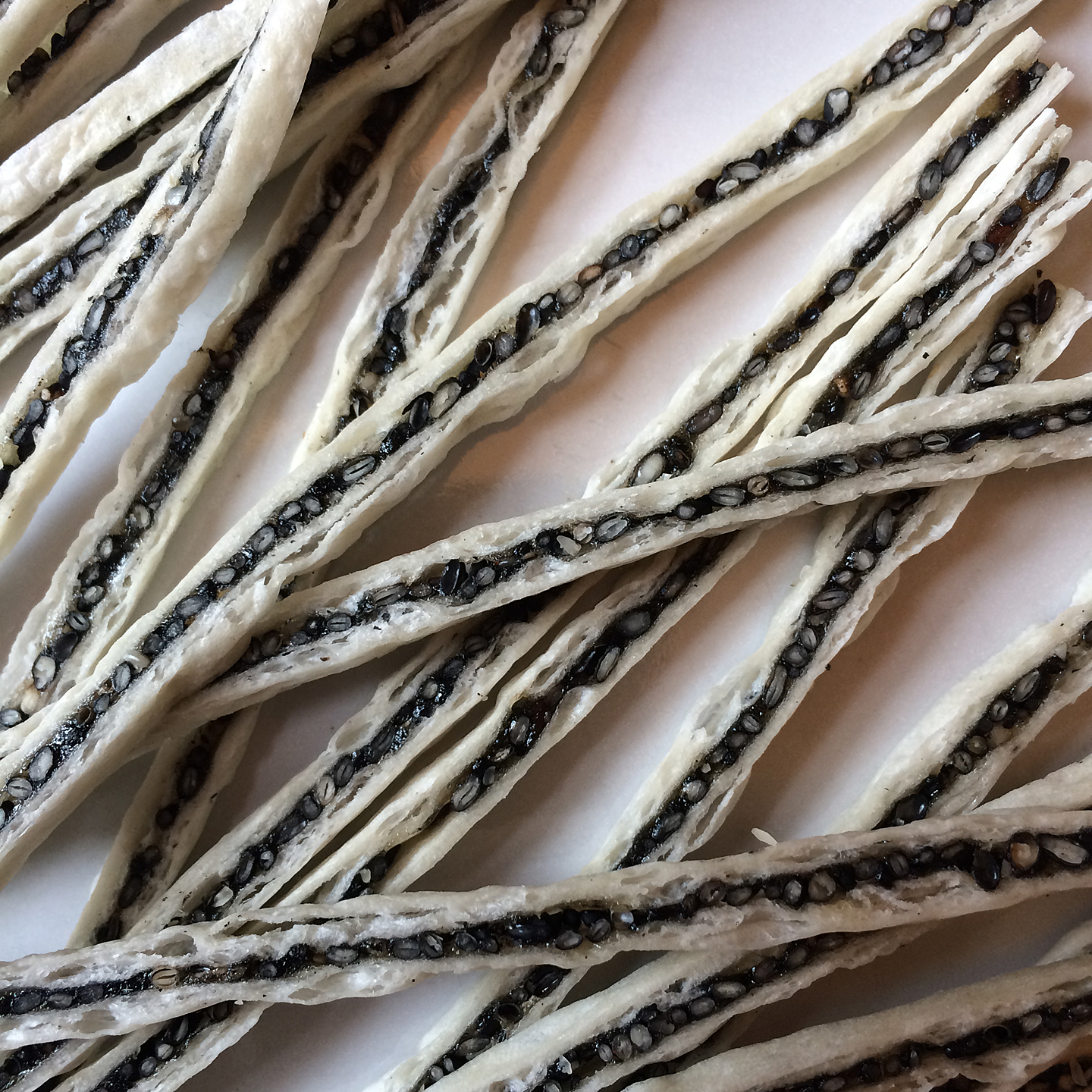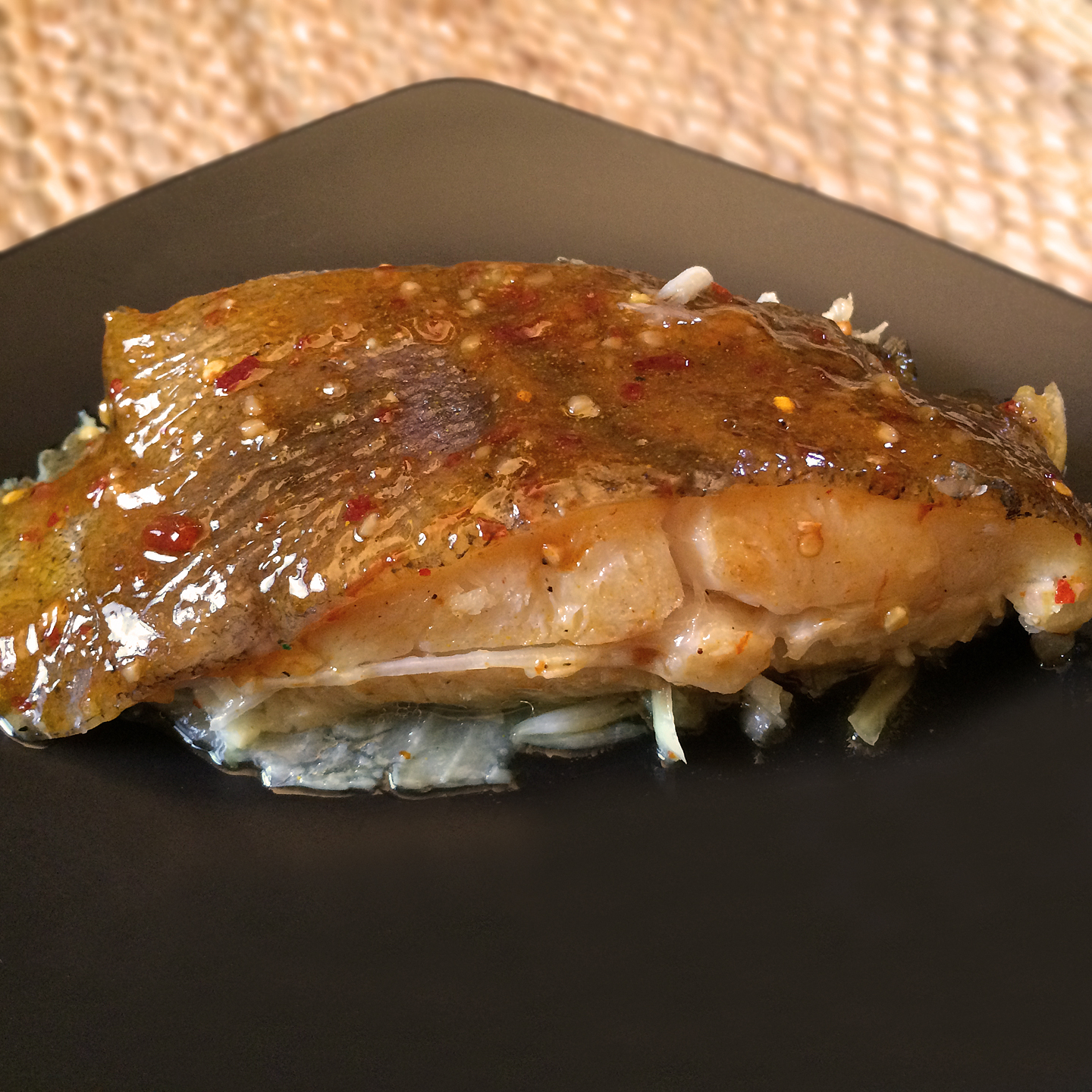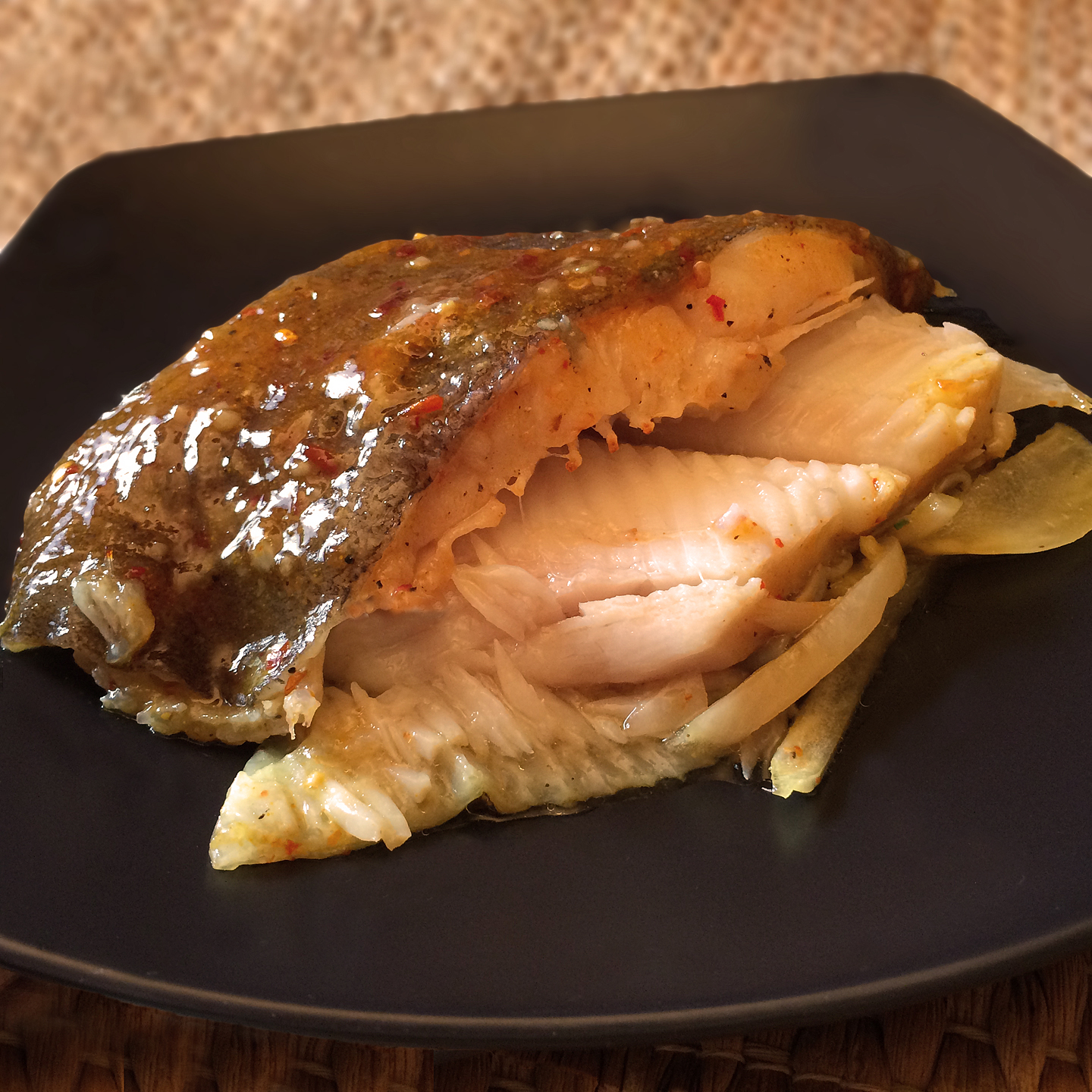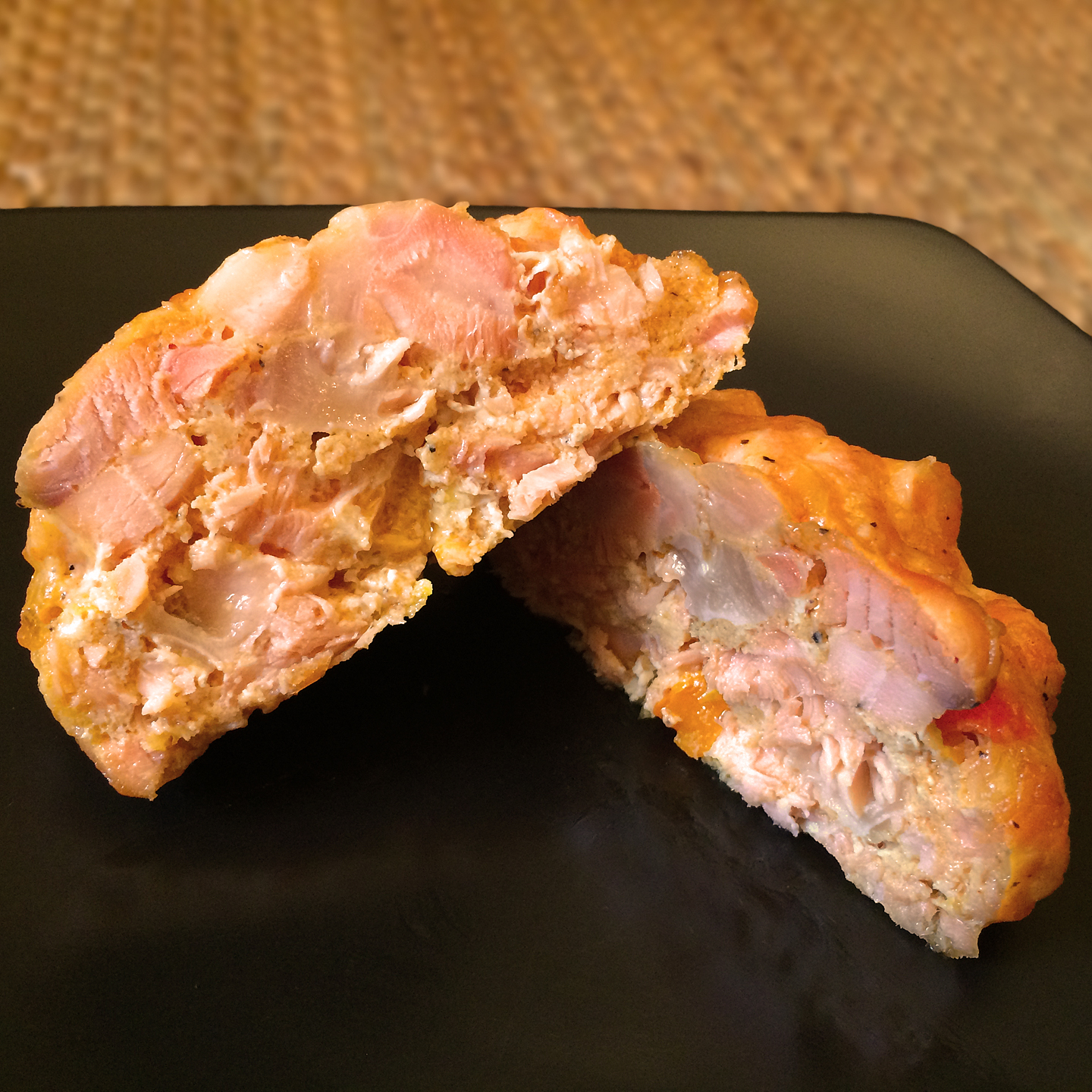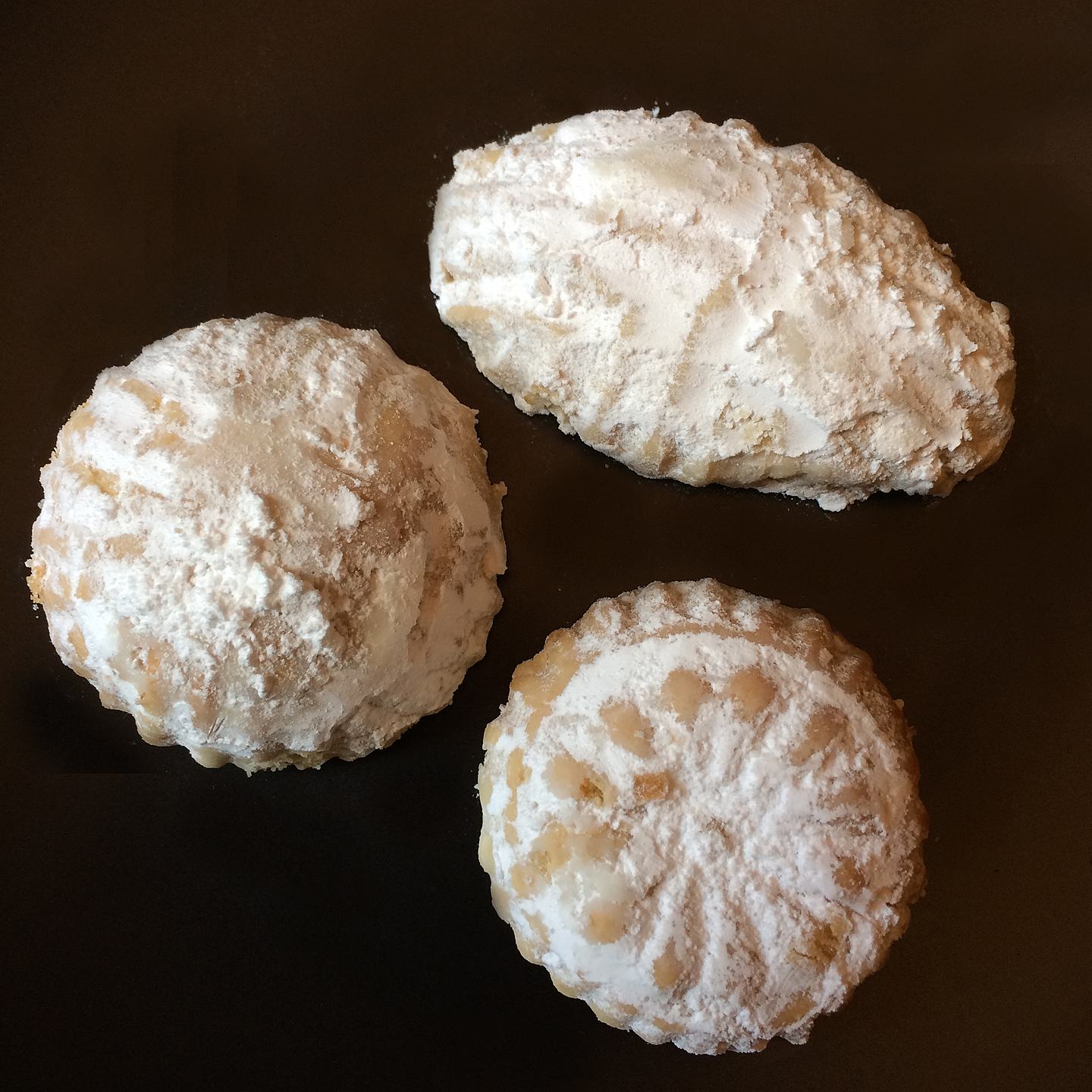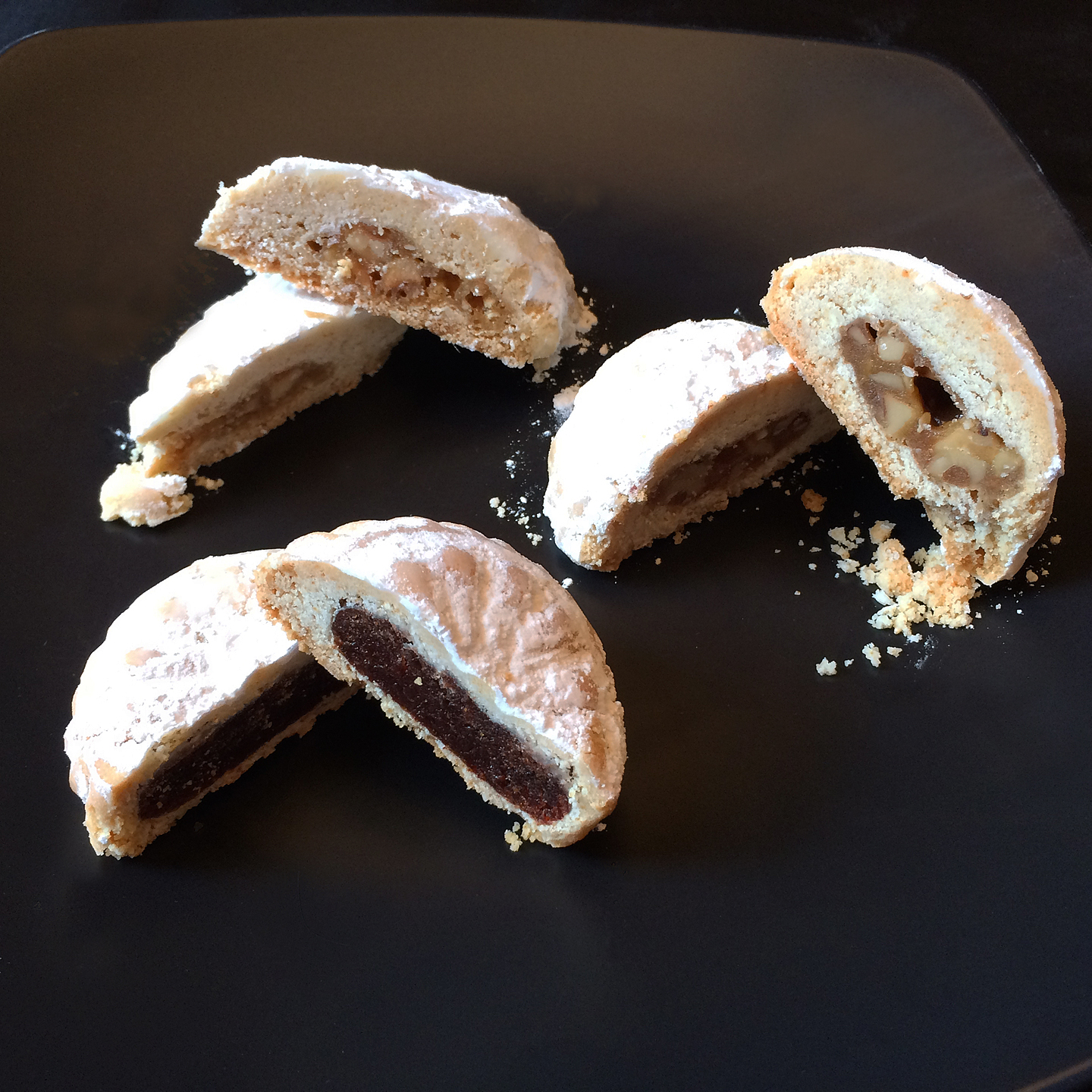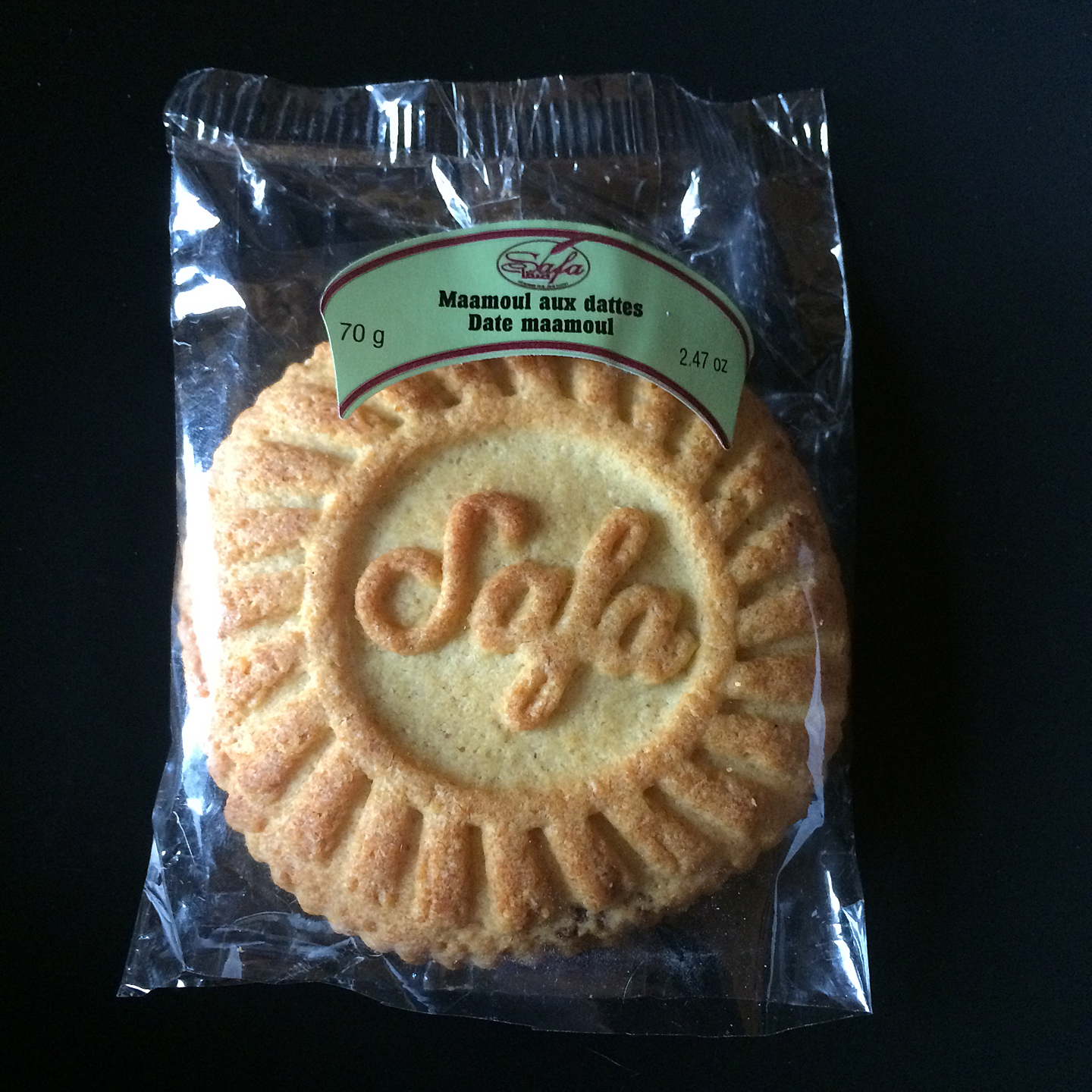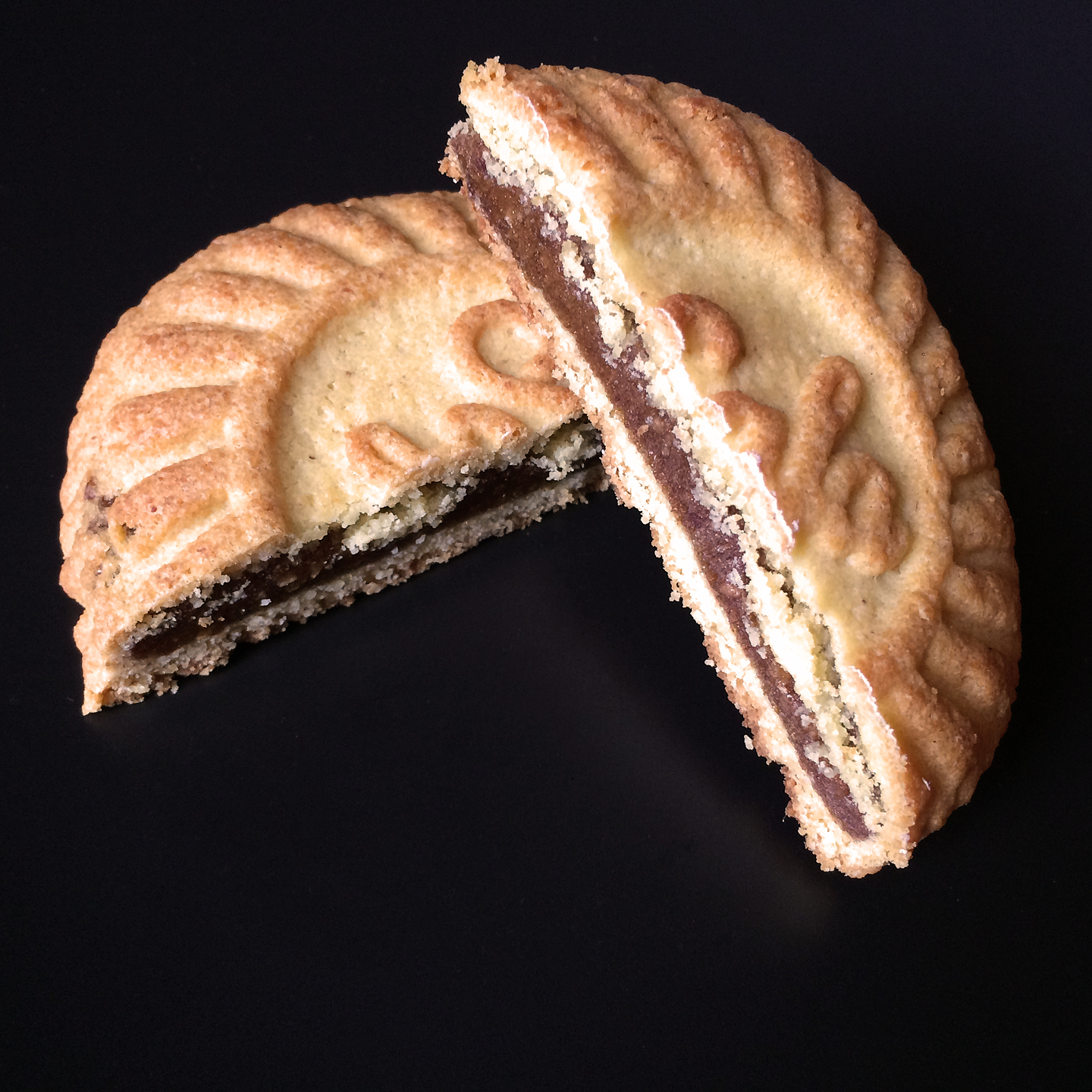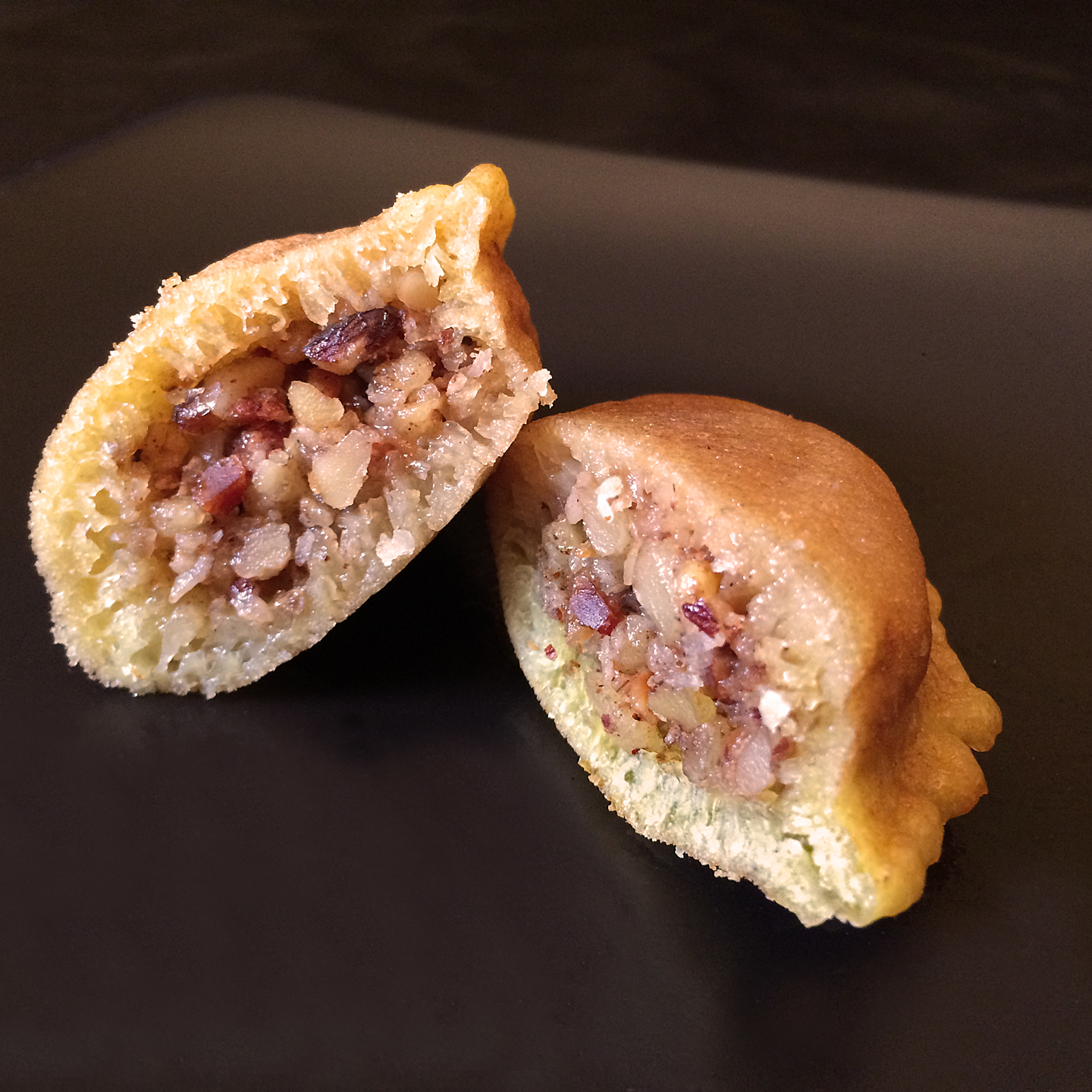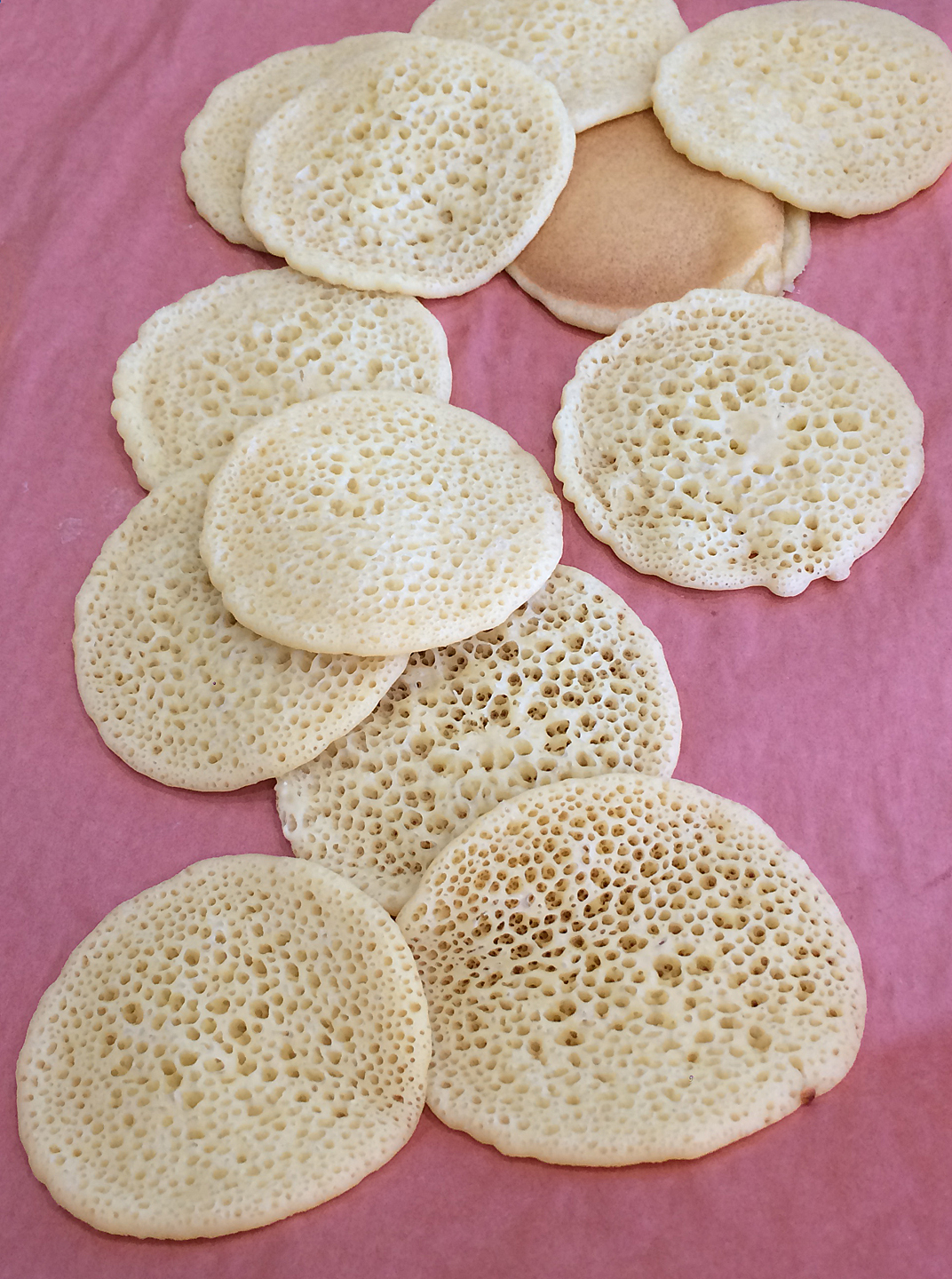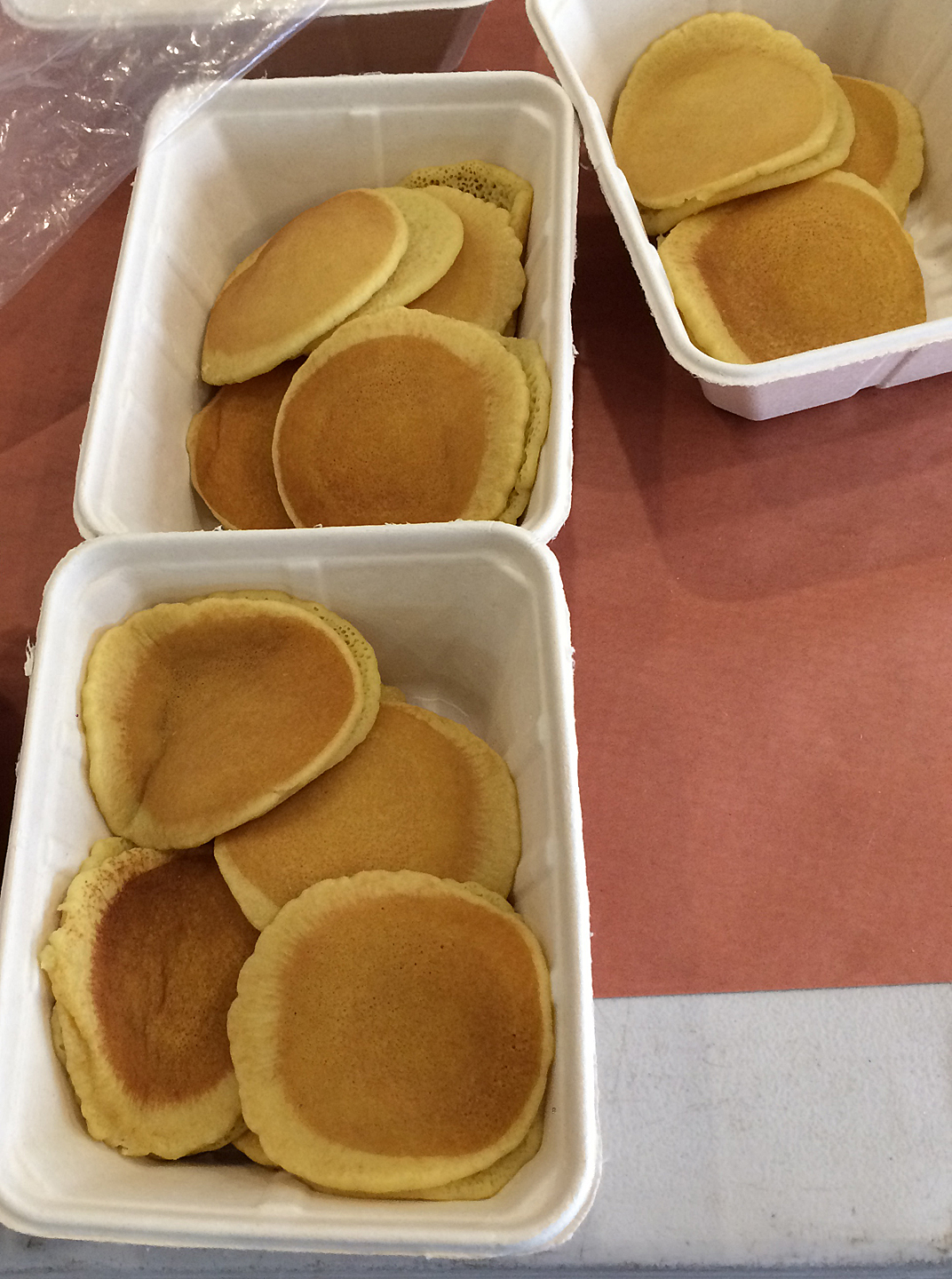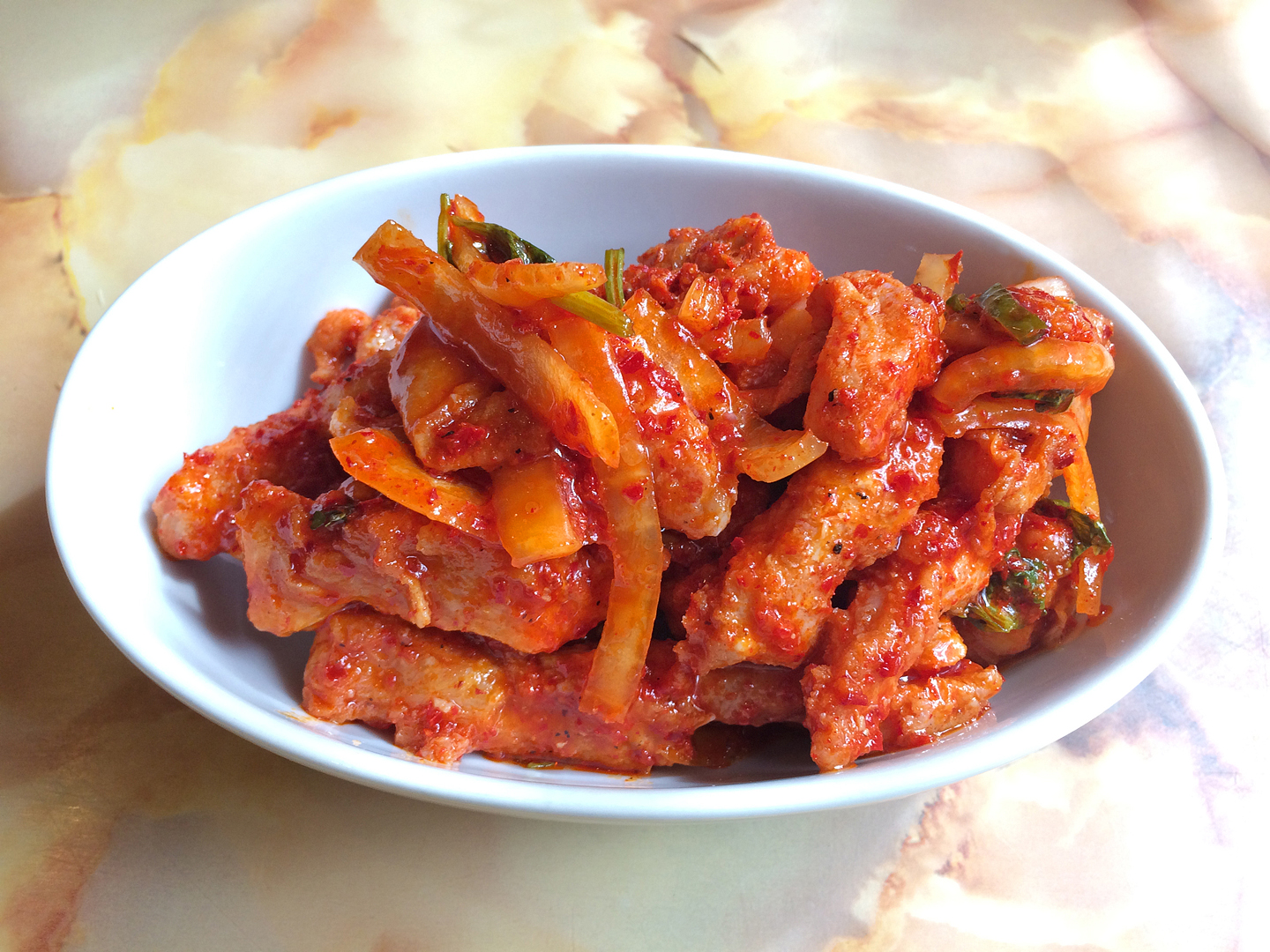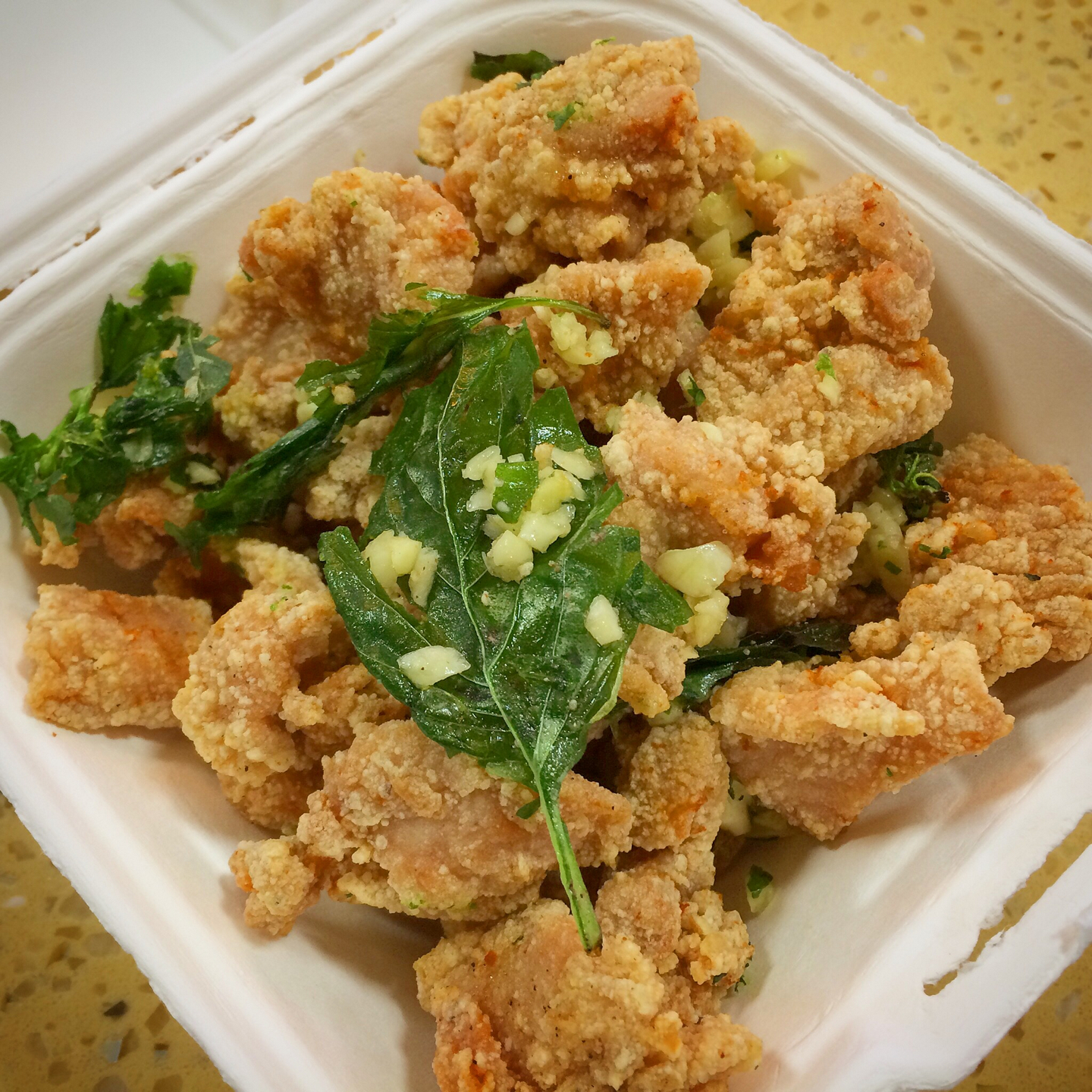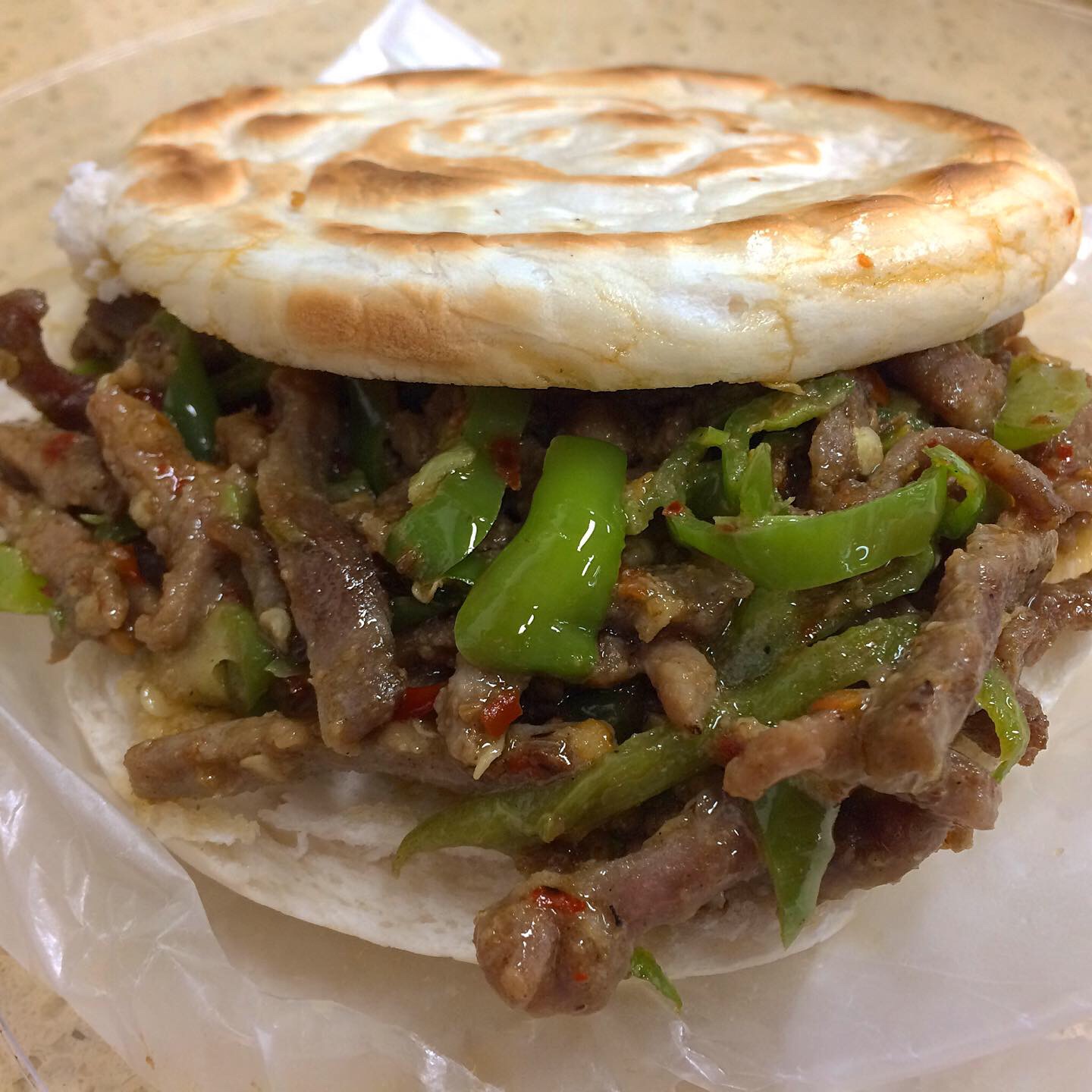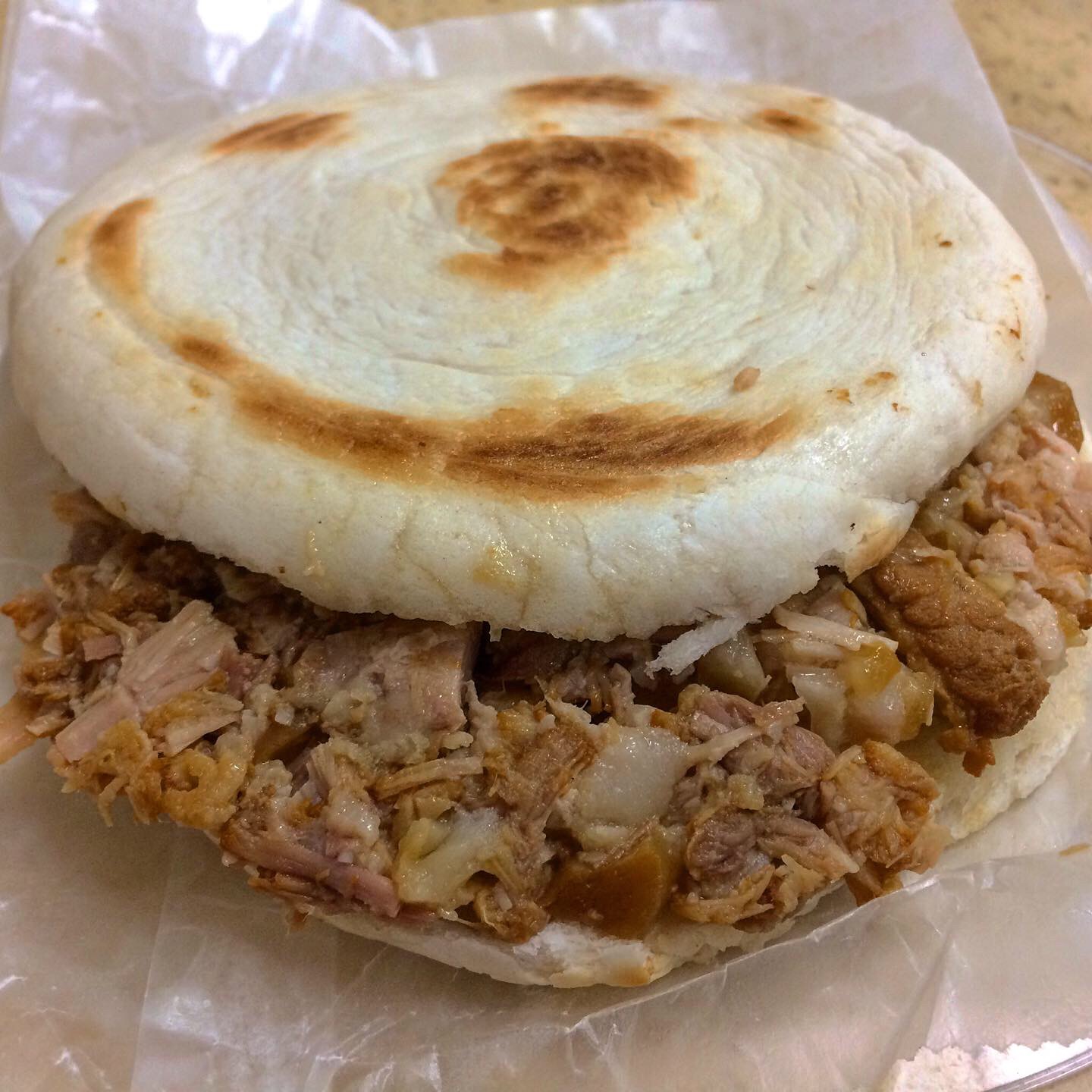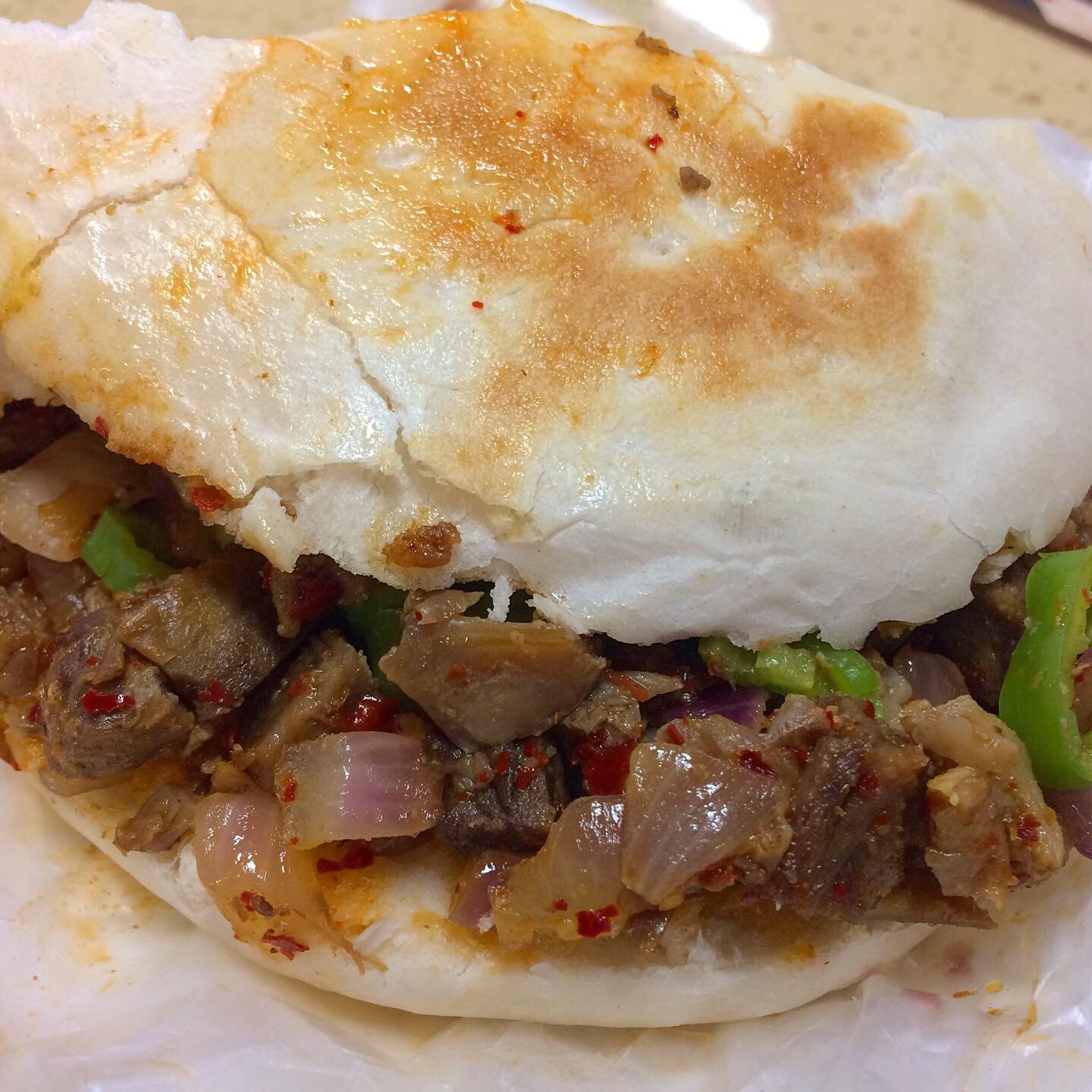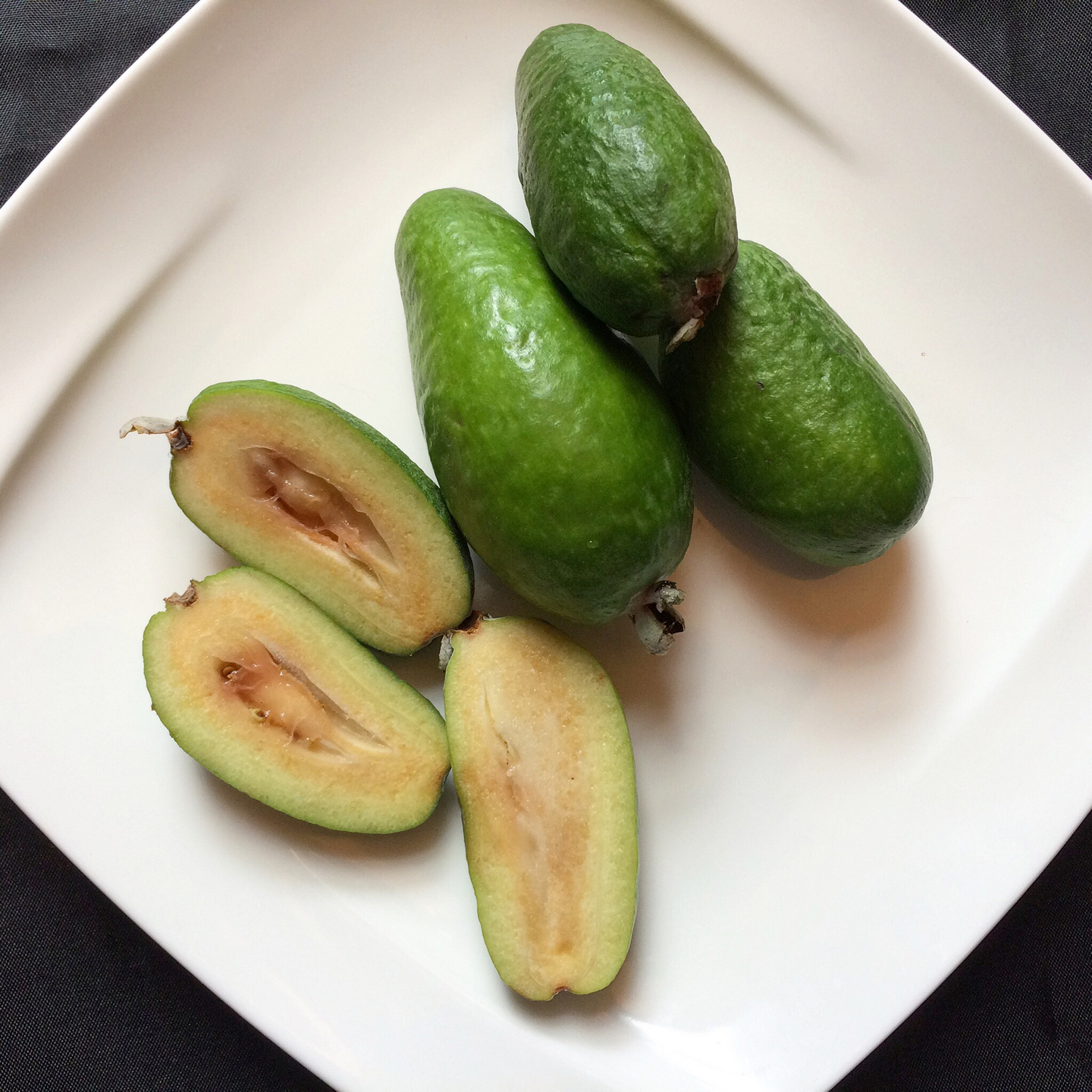Good news! COVID hospitalizations are waning and seasonal temperatures are waxing and that means it’s time to bring back ethnojunkets!
We’re getting the ball rolling with Exploring Eastern European Food in Little Odessa and I’ll be adding the rest soon.
Ethnojunkets FAQ:
Q: What’s an ethnojunket anyway?
A: An ethnojunket is a food-focused walking tour through one of New York City’s many ethnic enclaves; my mission is to introduce you to some delicious, accessible, international treats that you’ve never tasted but soon will never be able to live without.
Q: Which neighborhoods do you cover?
A: My most popular tours are described on the ethnojunkets page but there are always new ones in the works. For the time being, I’m only scheduling Little Odessa.
Q: When is your next ethnojunket to [fill in the blank: Little Odessa, Flushing, Elmhurst, Little Levant, etc.]?
A: Any day you’d like to go! Simply send me a note in the “Leave a Reply” section below or write to me directly at rich[at]ethnojunkie[dot]com and tell me when you’d like to experience a food adventure and which ethnojunket you’re interested in – I’ll bet we can find a mutually convenient day! (Pro Tip: Check the weather in advance for the day you’re interested in to facilitate making your choice; we spend a lot of time outdoors!)
Q: I’ve seen some tours that are scheduled in advance for particular dates. Do you do that?
A: Yes, in a way. When someone books a tour (unless it’s a private tour) it’s always fun to add a few more adventurous eaters to the group – not to mention the fact that we get the opportunity to taste more dishes when we have more people (although I do like to keep the group size small). You can see if there are any openings available in the “Now Boarding” section of the ethnojunkets page. Subscribers always get email notifications about these.
Q: What will we be eating in Little Odessa?
A: Here are just a few of the Eastern European, Central Asian, Russian, and Former Soviet Union delicacies we usually enjoy on our food tour along Brighton Beach Avenue in Brooklyn. (Not that I’m trying to tempt you to sign up! 😉)
(Click on any image to view it in mouth-watering high resolution.)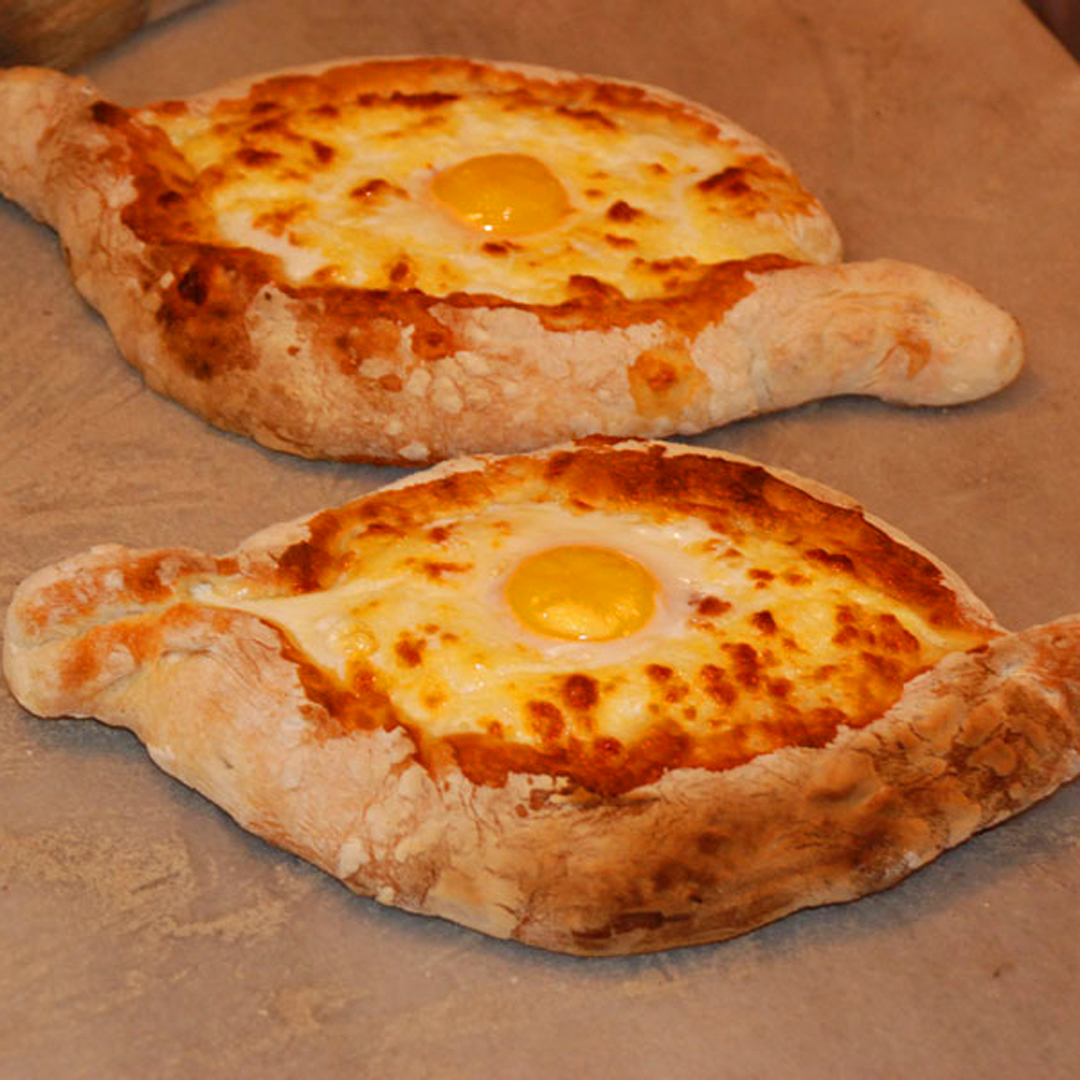
The overarching term is khachapuri, literally “cheese bread”; they’re commonly filled with tangy, salty sulguni cheese and imeruli, a fresh crumbly cheese which when melted together combine to make stretchy, cheesy nirvana. Georgian adjaruli is shaped like a kayak, the center of which is filled with cheese; a raw egg and a chunk of butter are added just as it’s removed from the oven. Stir the mixture: the egg cooks and combines with the butter and melted cheese. Break off pieces of the bread and dip them into the cheese mixture. What’s not to like?
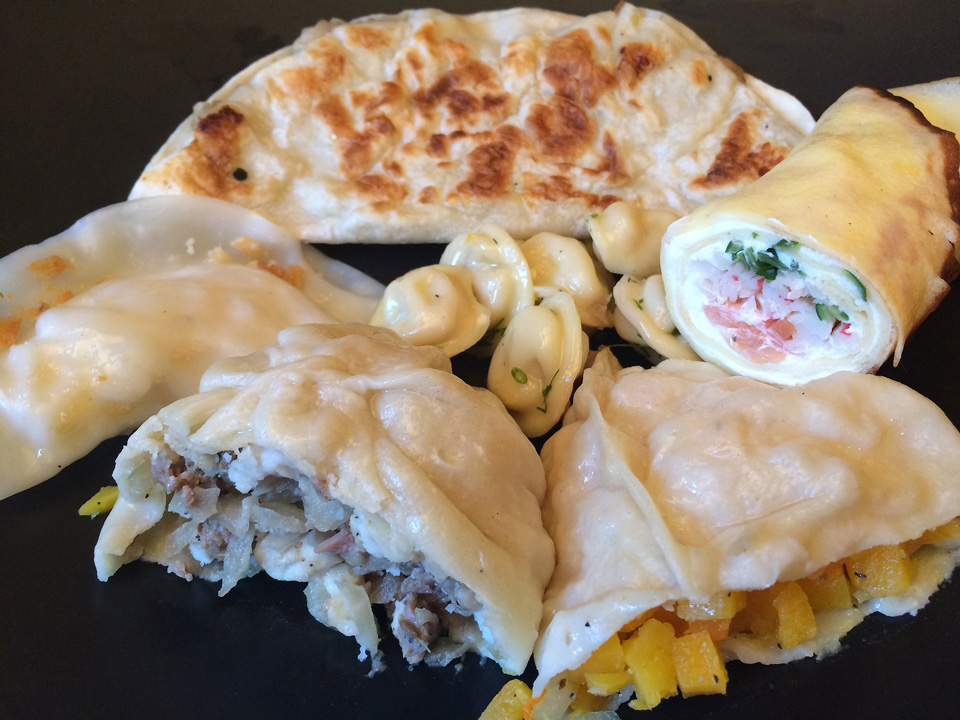
Uzbek manti, Russian pelmeni, and Azerbaijani kutaby in the back. Azerbaijani food is similar to the cuisine of Georgia but they lay claim to certain dishes such as kutaby as their own. A thin, tortilla-like crepe filled with ground lamb and luscious seasonings, folded in half and griddled, it’s an object of universal culinary lust for anyone whose lips have ever caressed it.
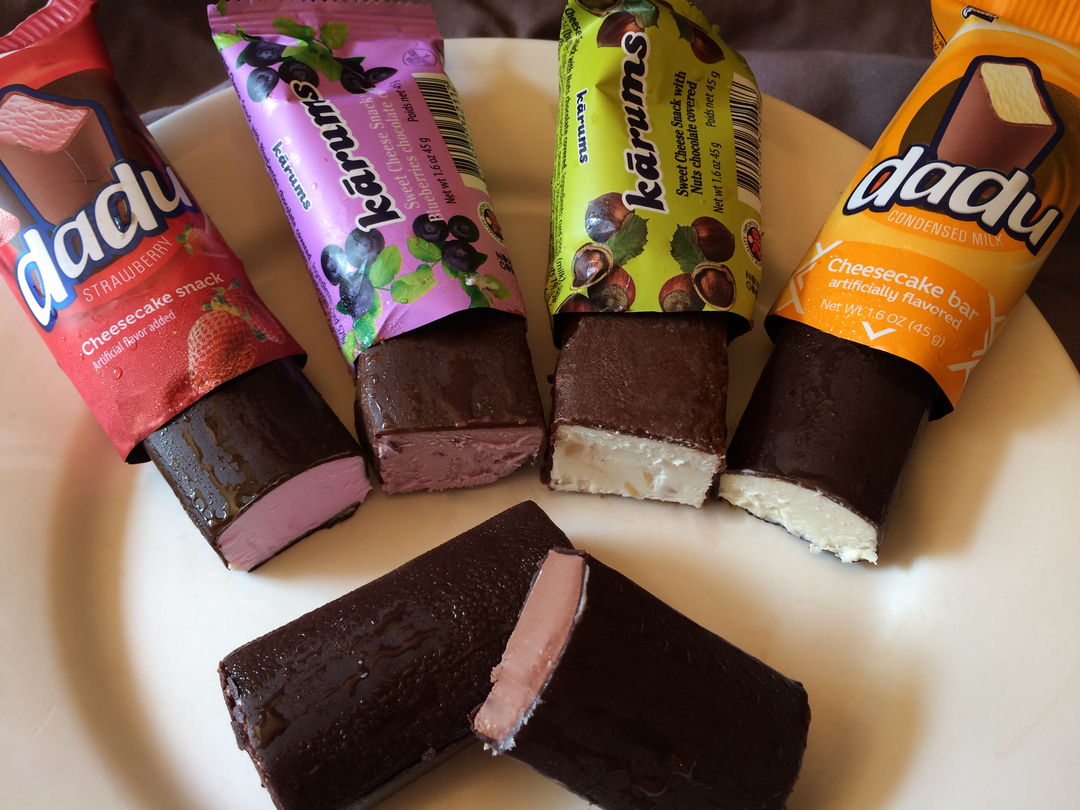
Curd Snacks are not unlike a cross between an Eskimo pie and chocolate covered cheesecake; individually wrapped, they come in an assortment of flavors from chocolate and vanilla to the more esoteric blueberry, blackberry, and raisin.
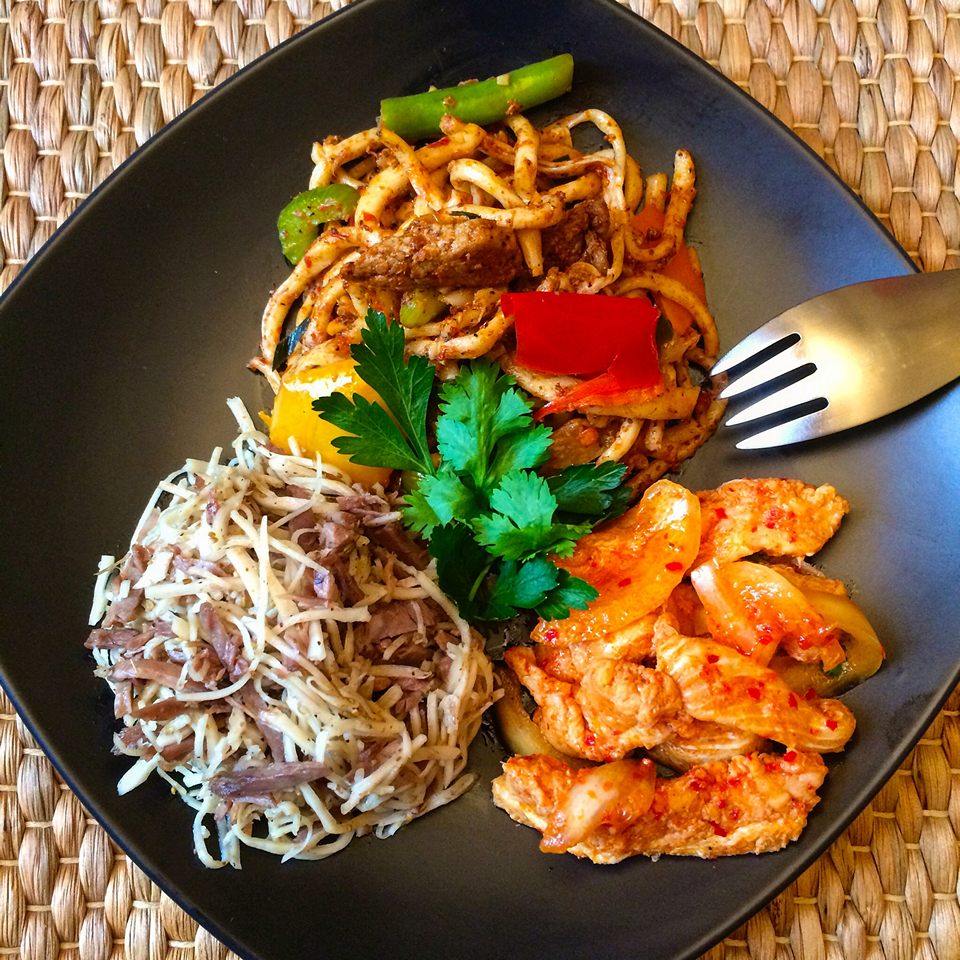
Salads: At the top there’s fried lagman, a savory noodle dish (also found in soup) of the Uyghur people, an ethnic group living in East and Central Asia. Moving clockwise there’s khe, raw fish marinated in onion, spicy red pepper and vinegar. Russia and North Korea share an 11 mile border; the Korean culinary character of khe is obvious. Finally, there’s norin (aka naryn). Very fine noodles and a generous measure of cumin accompany thinly sliced beef. So good!
I hope you’ll sign up and join us! The cost is $85 per person (cash only, please) and includes a veritable cornucopia of food so bring your appetite: you won’t leave hungry, and you will leave happy!
For more information and to sign up, send me a note in the “Leave a Reply” section at the bottom of this page or write to me directly at rich[at]ethnojunkie[dot]com and I’ll email you with details.
I’m looking forward to introducing you to one of my favorite neighborhoods!
